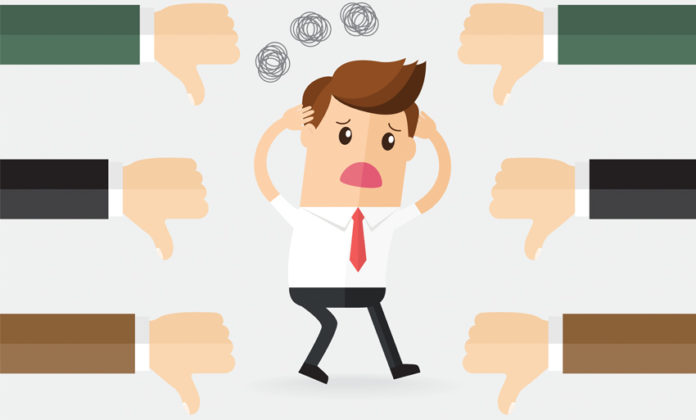There’s one simple truth for any company out there providing a product or service: negative feedback stings. The goal for any customer experience is for it to be a pleasant one, so when a customer expresses their dissatisfaction it’s a tough pill to swallow.
Negative feedback is rarer than you may think: a typical business only hears from 4% of their dissatisfied customers. The real issue with that number is those that don’t express their complaints will simply jump ship for a competitor–not giving the company a chance to earn their loyalty back. Thus, customer feedback is gold: even the negative.
Negative feedback can be an invaluable way for a company to up their game and improve their customer experience. Here are some ways to leverage criticism and turn a negative into a positive:
Negative Feedback As A Teacher
Kristin Smaby, author of “Being Human is Good Business”, said that “When customers share their stories, they’re not just sharing pain points. They’re actually teaching you how to make your product, service, and business better.”
Simply put, a business cannot learn and grow from their mistakes if those mistakes aren’t pointed out by the very customers they serve. Customer complaints can open a company’s eyes to issues or pain points that they otherwise would have ignored.
Winning Back Trust
Sometimes, if a company seems ‘too perfect’ in their ratings and testimonials, it can lead to distrust from the consumer. In fact, according to the Capterra survey, only 18% of online shoppers feel affected by negative reviews, while a whole 52% of customers agree that negative feedback makes them trust the product more.
In many cases, an unhappy customer who encountered a problem with your service but you got it fixed immediately demonstrates bigger devotion to your brand that a customer who has never been disappointed with your service.
Deepen Relationship With Customer
One of the first instincts when receiving negative feedback is to become defensive. However, a customer’s criticism is not towards a business as a whole but to the overall customer experience. By avoiding emotional responses and actively listening to the customer, a business can use this opportunity to build trust and loyalty.
Owning up to fault is the first step in rebuilding a relationship. Accountability is very important in building trust with customers and setting a standard for excellence. Obviously you shouldn’t admit to something you didn’t do, but if your company is to blame, there’s no reason to try to come up with excuses.
Furthermore, when you approach naysayers professionally, it can increase your reputation and become a win-win. It shows that you value their opinions and view them as more than a sale. A Helpscout survey found that resolving a complaint in the customer’s favor and they will do business with you again 70% of the time.
Making Amends From A Negative Customer Experience
So, a customer just left negative feedback with your company via social media, email, phone call, or another channel. So how do you make amends?
Apologize Sincerely
A simple apology can go a long way in repairing a broken customer relationship. It shows ownership of a flaw. In addition, the more personal, the better. A written message that expresses the customer’s complaint in addition to providing a solution will always trump a template response.
Also, never use the word ‘if’ in an apology. For example, “We’re sorry if you felt our customer experience was inadequate.” That’s an easy way to further anger a customer for questioning their feelings in a certain way. A sincere apology is a way of the company acknowledging the customer’s pain or inconvenience.
Respond Quickly
The longer you wait to respond to a customer complaint, the longer they have to construct a narrative about what might have happened or what may happen in the future. Radio silence makes the customer feel as though you don’t care or have a ‘take a number’ mentality. Since a customer giving negative feedback is so rare in the first place, so addressing it should be a number one priority when it does arrive.
Provide A Solution
Having a ‘call to action’ in place after the apology is essential in potentially salvaging the customer relationship. In many cases, businesses offer a free replacement (if the product was broken or incorrect) or a free or discounted service if a monthly fee is involved.
However, a solution doesn’t necessarily mean giving something for free. If a customer’s complaint has to do with a poor customer experience or interruption in service, simply telling the customer that their feedback is valuable and that it will be used to improve the process for their next interaction can be enough to keep them around.
In Conclusion
In short, it’s easy to deem negative feedback as something that is demoralizing or demotivating, but it doesn’t have to be. The best companies are able to take the negatives and use them as a way to improve their customer experience. Embracing criticism shows humility, dedication to improvement, and builds trust with your customer base.





